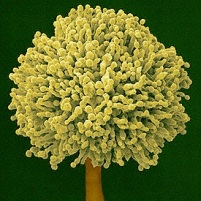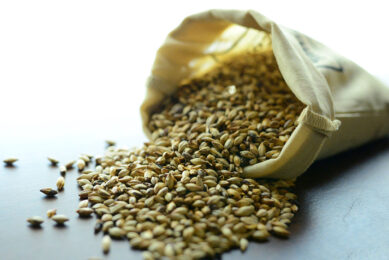DDGS dangerous source of mycotoxins

A survey carried out by Biomin, showed that all tested samples of dried distiller’s grains with solubles (DDGS) were contaminated with at least one mycotoxin.
To understand to what extend the DDGS inclusion in animal diets is safe and
to provide customers insights in the occurrence of mycotoxins in DDGS samples worldwide, Biomin
initiated and carried out a study with 103 samples mainly received from the
United States (67%) and Asia.
Samples were tested for major mycotoxins of
interest to animal husbandry – aflatoxin B1, zearalenone (ZON), deoxynivalenol
(DON or vomitoxin), T-2 toxin and fumonisins (FUM).
All tests have been
conducted by Quantas Analytics Austria, and Romer Labs Singapore.
The
analyses were performed using standard procedures. Aflatoxins, ZON and total FUM
were analyzed by HPLC (High Pressure Liquid Chromatography) whereas DON values
were obtained by TLC (Thin Layer Chromatography).
For the purpose of data
analysis, non-detect levels were based on the quantification limits of the test
method for each toxin: Aflatoxin B1 <0. 5 µg/kg; ZON <10 µg/kg; DON
<150 µg/kg; T-2.
Almost all samples infected
99% of DDGS
samples were contaminated with at least one mycotoxin. 92% (ZON), 64% (DON), 87%
(FUN) and 26% (T-2) of the samples were contaminated with these “field
mycotoxins” produced mainly by Fusarium sp.
The average contamination
levels found in the DDGS samples which tested positive for these mycotoxins were
333, 2130, 596 and 113 µg/kg respectively, which can already be considered as
high contaminations.
Nevertheless, for the abovementioned mycotoxins,
contaminations as high as 8107, 12000, 9042 and 218 µg/kg respectively could be
detected.
Aflatoxin B1, produced by Aspergillus sp., was present in 8% of
the samples. The average contamination of the positive samples was 24 µg/kg. The
highest concentration found for this mycotoxin in the analyzed samples was 89
µg/kg.
The only sample which tested negative for all analyzed mycotoxins
was a wheat distiller.
Source concentration
The quality of the
resulting by-products such as DDGS, in terms of mycotoxins’ contamination
depends in a great extent on the quality of the grains purchased by the ethanol
plant.
If damaged grains are the most prevalent raw material, higher
mycotoxin contamination levels will be found in the by-product, as these are
preferred locations for fungi development and subsequent mycotoxin
production.
As seen from the results mentioned, the fermentation process
for the production of DDGS does not destroy mycotoxins.
On the contrary,
it makes them readily available to be absorbed by animals as the maximum
inclusion rates for DDGS range from 5% for nursery pigs’ to 20% in finishing
pigs, developing gilts, gestating sows and lactating sows’ diets.
In the
case of poultry, these rates go from 10% in broilers’ (starters) to 20% in
breeders’ diets.
No carefree use of DDGS
Although DDGS may be
seen as a practical solution for animal producers, enabling them to counteract
the rising prices of feedstuffs and feed, the widespread carefree use of these
products is still far from reality.
DDGS are a dangerous source of
mycotoxins which are toxic compounds with hazardous effects to animal health and
productivity.
Monitoring the mycotoxin content of DDGS prior to its
inclusion in animals’ diets is crucial to avoid the exposure of animals to the
negative effects of mycotoxins.
Counteracting mycotoxins’ effects can be
later on accomplished by adding mycotoxin deactivating products to the
problematic feeds to ensure successful animal
production.
Join 26,000+ subscribers
Subscribe to our newsletter to stay updated about all the need-to-know content in the feed sector, three times a week. Beheer
Beheer









 WP Admin
WP Admin  Bewerk bericht
Bewerk bericht